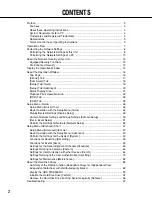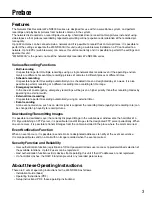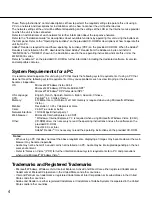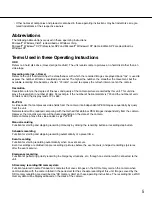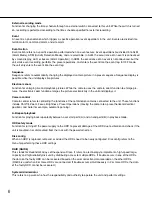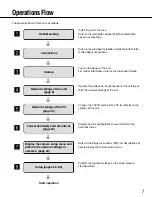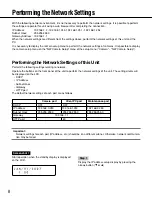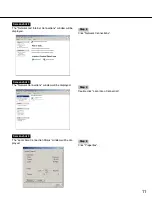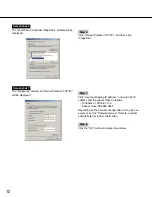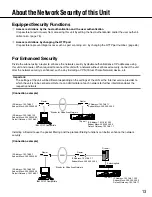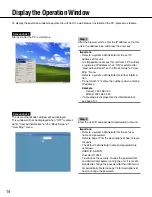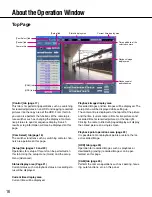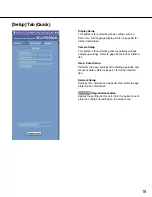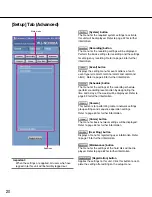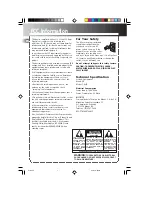
5
• Other names of companies and products contained in these operating instructions may be trademarks or regis-
tered trademarks of their respective owners.
Abbreviations
The following abbreviations are used in these operating instructions.
Microsoft
®
Windows Vista
®
is described as Windows Vista.
Microsoft
®
Windows
®
XP Professional SP2 and Microsoft
®
Windows® XP Home Edition SP2 are described as
Windows XP.
Terms Used in these Operating Instructions
HDD
Refers to a hard disk drive (mass storage medium). The unit records camera pictures on a hard disk rather than on
video tape.
Recording rate (ips, I-Frame)
Refers to the unit that determines the smootheness with which the recorded images are played back. "ips" is used to
express the number of frames recorded per second. The higher the number, the smoother the movement, but the
available recording time becomes shorter. "I-Frame" is used to express the refresh interval set on the camera.
Resolution
Resolution refers to the degree of fineness and quality of the camera pictures recorded by this unit. This unit dis-
plays the resolution in number of dots. For example, if the number of horizontal dots is 720 and the number of verti-
cal dots is 480, the display reads 720 x 480.
M-JPEG
A video codec that compresses video fields from the camera into independent JPEG images sequentially by query
from the unit.
Network load will be reduced comparing with the method that obtains JPEG images independently from the camera.
However, the transmission rate will fluctuate depending on the state of the camera.
Some cameras phrase this video codec as just "JPEG".
Manual recording
Function for starting and stopping recording manually by clicking the recording button or recording stop button.
Schedule recording
Function for starting and stopping recording automatically at a preset time.
Event recording
Function for starting recording automatically when an event occurs.
Event recordings are divided into pre recordings (pictures before the event occurs) and post recordings (pictures
after the event occurs).
Emergency recording
Function for performing priority recording in emergency situations, etc. through an external switch connected to the
unit.
SD memory recording/SD memory data
Function featured in some Panasonic’s cameras that saves images on the SD memory card on the camera when
communication with the camera failed in the period set for the schedule recording of this unit. Images saved by the
SD memory recording are described as "SD memory data" on these operating instructions. The recording time of SD
memory data will be displayed based on the clock of the camera.


